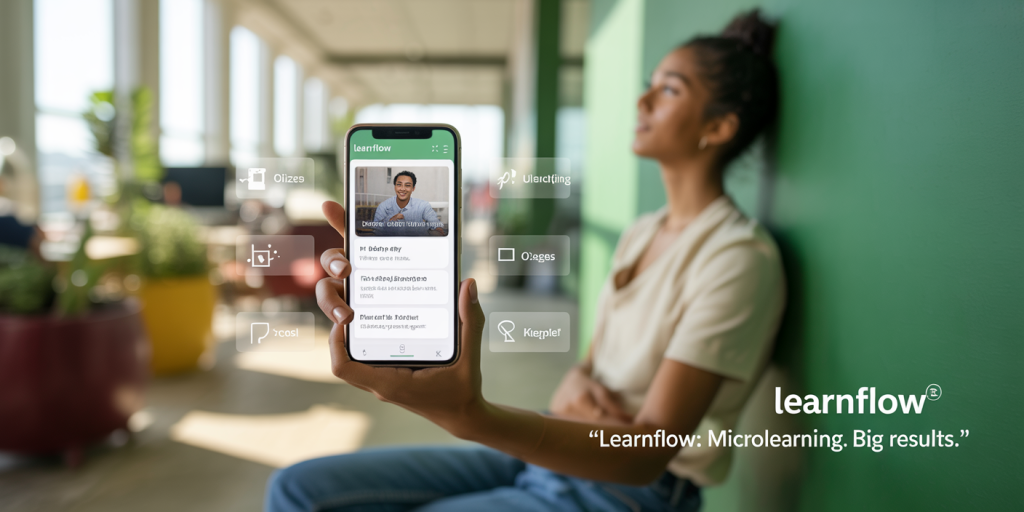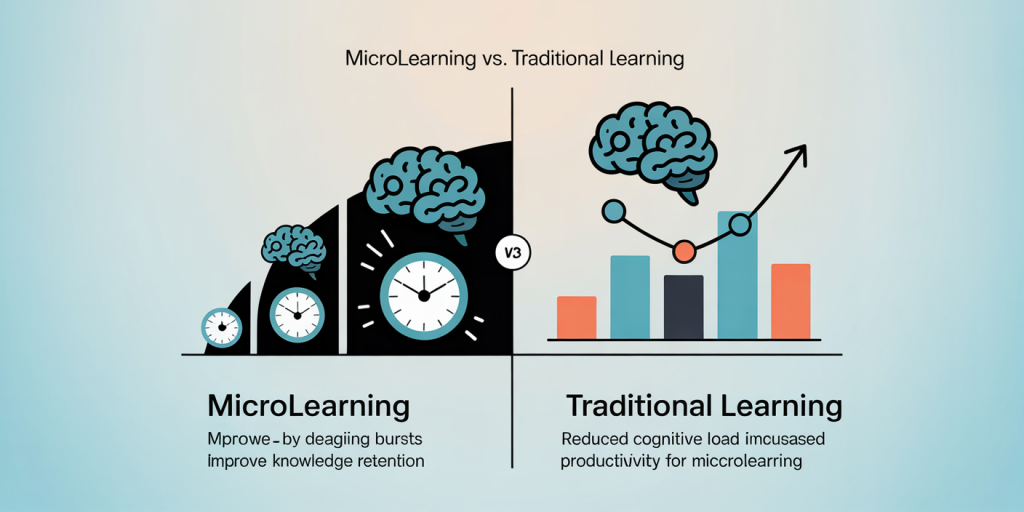Microlearning: How to Keep Evolving Without Overwhelm
In today’s fast-paced world, continuous learning has become essential for professional growth and personal development. However, the sheer volume of information available can lead to feelings of overwhelm, with many struggling to keep pace. Microlearning has emerged as a solution — offering bite-sized, focused learning opportunities that fit into busy schedules. This article explores how to harness microlearning effectively to maintain steady growth without succumbing to cognitive overload.
Understanding the Need for Microlearning in Modern Education
The modern learner is often juggling multiple responsibilities, including work, family, and social commitments. Research shows that the average attention span has decreased significantly, from 12 seconds in 2000 to 8 seconds in 2023 (Microsoft Corp., 2023). This decline makes traditional, long-form educational content less effective. Microlearning addresses this by breaking down information into small, manageable chunks, allowing learners to absorb, retain, and apply knowledge more effectively.
For example, companies like GE and IBM have adopted microlearning platforms to train their workforce efficiently. Instead of long training sessions that disrupt work schedules, employees engage in brief, targeted modules lasting between 2 to 10 minutes. This approach has resulted in improved knowledge retention rates—up to 80%—compared to traditional e-learning methods, which typically hover around 60% (Journal of Applied Psychology, 2022).

Moreover, microlearning aligns with the adult learning principle of “just-in-time” knowledge delivery. Learners can access relevant topics as issues or projects arise, ensuring immediate application and higher impact.
Key Principles of Microlearning to Avoid Overwhelm
The effectiveness of microlearning hinges on its design. To avoid overwhelming learners, content should adhere to specific principles: brevity, relevance, segmentation, and interactivity.
Brevity and Focus
Microlearning content is usually short—typically lasting from 2 to 10 minutes. This brevity ensures learners are not bogged down with excessive information at once. For instance, LinkedIn Learning offers courses segmented into short videos focused on singular topics like “Effective Email Communication” or “Mastering Excel Formulas.” These modules can be completed during breaks or commutes, minimizing disruption and cognitive fatigue.
Relevance and Context
Relevant content increases learner engagement and reduces overload. Learners are motivated when material directly relates to their tasks or goals. For example, a customer service employee might focus on a 5-minute microlearning segment about conflict resolution techniques rather than a broad course on communication theory.
Segmentation further helps by breaking content into logical, thematic sections, ensuring learners can digest one concept fully before moving on. Interactive elements such as quizzes, simulations, or reflection prompts also reinforce learning, increasing retention and concentration.
Practical Strategies for Implementing Microlearning Systems
For organizations and educators aiming to implement microlearning, several strategies help maximize its benefits while minimizing overwhelm.
Personalized Learning Paths
Customization is vital. A one-size-fits-all approach risks disengagement. Tools like AI-driven learning management systems (LMS) can analyze learner progress and preferences, prescribing relevant micro-courses dynamically. For instance, Amazon uses personalized recommendations on their employee training portal, directing workers to microlearning modules that address identified knowledge gaps.
Time Management Protocols
Integrating microlearning into a daily routine prevents backlog and stress. Allocating specific blocks—such as 10 minutes every morning or after lunch—for microlearning ensures consistency without overloading schedules. Adobe reported that employees who dedicated 15 minutes daily to microlearning showed a 20% increase in productivity compared to those with no formal learning schedule (Adobe Learning Report, 2023).
Encouraging Social Learning and Collaboration
Combining microlearning with collaborative tools addresses isolation and knowledge silos. Platforms like Slack or Microsoft Teams can incorporate learning bots or channels where employees discuss recent microlearning topics, share insights, or co-develop problem solutions. Social reinforcement not only boosts motivation but also helps internalize knowledge through peer interaction.
Comparing Microlearning with Traditional Learning: A Comparative Table
To illustrate the benefits and challenges of microlearning versus traditional learning, the following table offers a side-by-side comparison:
| Aspect | Microlearning | Traditional Learning |
|---|---|---|
| Duration | 2 to 10-minute modules | 1 to several hours or days |
| Content Delivery | Focused, bite-sized topics | Broad, comprehensive courses |
| Engagement Level | High due to brevity and interactivity | Variable, often lower due to length |
| Flexibility | Accessible anytime, fit into daily tasks | Scheduled and less flexible |
| Knowledge Retention | Up to 80% (Journal of Applied Psychology, 2022) | Around 60% |
| Cognitive Load | Lower, reduces overwhelm | Higher, risk of cognitive overload |
| Application Speed | Immediate, “just-in-time” learning | Often delayed application |
This comparison underlines why organizations across industries are shifting towards microlearning to build agile, knowledgeable workforces.
Case Studies: Real-World Success with Microlearning
Case Study 1: Walmart’s Employee Training Program
Walmart implemented microlearning by deploying short video lessons emphasizing workplace safety, customer interaction, and inventory management. These modules, accessible via mobile devices, allowed employees to learn during downtime. The result was a 15% decrease in workplace accidents and a 10% improvement in customer satisfaction scores within the first year (Walmart Corporate Report, 2022).

Case Study 2: Duolingo’s Gamified Language Lessons
Duolingo is a leader in applying microlearning for language acquisition through daily short lessons enhanced with gamified elements. Learners can practice for as little as 5 minutes a day, making language learning less intimidating. Studies show Duolingo users retained and applied vocabulary about 40% better than those using traditional textbook methods (Science Advances, 2021).
These examples emphasize how tailoring microlearning to user needs and integrating technology fosters steady learning progress without overwhelming participants.
Preparing for Ongoing Evolution: The Future of Microlearning
The evolution of microlearning is linked closely to advances in technology and our understanding of cognitive science. Artificial intelligence (AI), augmented reality (AR), and adaptive learning systems are transforming how microlearning modules are designed and delivered. Future platforms will increasingly create ultra-personalized, context-aware, and immersive microlearning experiences.
For example, imagine a sales representative wearing AR glasses that deliver interactive product briefs and customer data in real-time during meetings, supported by microlearning snippets relevant to the context. This continuous, seamless learning reduces cognitive load by embedding learning naturally into the workflow.

Additionally, the growing trend of “learning in the flow of work” integrates microlearning content into daily tools, such as email or project management software, ensuring learners evolve continuously without disruption.
According to the Global Microlearning Market Report (2024), the market value is expected to grow at a CAGR of 15.2% over the next five years, reflecting increased adoption across sectors. Companies investing in scalable microlearning ecosystems will be better positioned to adapt to changing skill demands, innovate faster, and maintain employee engagement.
Final Thoughts on Sustaining Growth Without Burnout
Microlearning presents a viable pathway for organizations and individuals to keep evolving intellectually without the risk of overwhelm. Its focus on brevity, relevance, personalization, and interactivity aligns with learner behaviors and cognitive capabilities in a digital age. The ability to integrate learning seamlessly into everyday work routines enhances motivation and knowledge application.
As microlearning continues to evolve with emerging technologies and data-driven insights, those who master its principles will thrive in constantly shifting environments. By balancing rapid knowledge acquisition with thoughtful content design and user engagement, microlearning becomes not just a training tool but a catalyst for lifelong growth.
